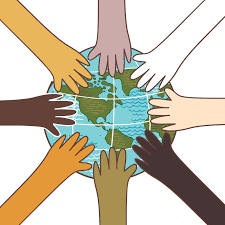Multiculturalism: Pathway to Acceptance – By Randika Jayakody & Jerome Perera

Image Source : austin.thinkbilingual
Image Source : Qld Sri Lankan Newsletter – Dæhæna – December 2022
Multiculturalism is a journey of mixing cultural, linguistic, ethnic and gastronomic features over time. Over tens of thousands of years through settlement, colonialism and trade, Sri Lanka has travelled this journey and the multiculturalism within the island continues to evolve through intermixing.
Acknowledgement of multiculturalism can start with being incorporated into the education system to inspire children to become comfortable with these ideas. Like Australia, Sri Lanka could acknowledge the commencement of its history from the indigenous community in Sri Lanka, the Wanniyala Aetto to redress their exclusion from the national narrative.
Reforming teaching of Sri Lankan history to incorporate the role and contributions of all ethnic and cultural groups and emphasising the contributions made by all communities to the island’s cultural identity is also important.
Systemic protection for communities against discrimination, alienation and subjugation are vital to address racism and provide a safe space for individuals to practice their culture. Judicial protection can help build a pathway towards addressing discrimination to empower ethnic groups to vocalise their experiences and share their cultural identity with other Sri Lankans.
Establishing multicultural societies can help promote cultural identities and foster sharing cultural experiences. For instance, in Australia, various multicultural societies regularly host events showcasing their cultures to general society. If such events are hosted by the various ethnic groups in Sri Lanka, it will help build an understanding of the diversity of cultures that live across the island.
As individuals, we could start conversations about cultural identity, traditions, cuisine and languages in order to build awareness and appreciation. For instance, speaking to ones neighbours in Sri Lanka and ask about their own history and how they identify can start fruitful conversations about multiculturalism. Similarly, studying one’s family ancestry without judgement and with a sense of curiosity may palpably help embrace the reality of one’s own multicultural history.
More recently, numerous research articles and documentaries have begun exploring Sri Lankan multiculturalism in many languages. One could always take a moment to google Sri Lankan multiculturalism and learn about the history of Sri Lanka through fresh perspectives.
When traveling or exploring cuisines in Australia, try and spot cultural, linguistic, food, or musical similarities. This is likely to help one understand the myriad ways in which Sri Lanka is connected to the rest of the world. For instance, Randika and I often engage in fulfilling conversations with Brazilian, Portuguese, Arab, Persian, Indonesian, British and other individuals regarding our shared linguistic, gastronomic, cultural and ethnic connections. These conversations helped us learn that we all eat patis (empanadas), muscat, faluda, tea and biscuits, and have so much in common. Learning that batik, sambals, and sarongs are Indonesian only helped cement our bonds with our Indonesian friends.
Finally, correcting individuals who limit Sri Lankan’s multiculturalism to one or two ethnic groups, challenging ideas about majority rule and separate ethnically divisive political narratives, are vital steps towards cultivating and rebuilding our inherent multicultural identity.
 Randika Jayakody & Jerome Perera
Randika Jayakody & Jerome Perera
Among Randika and Jerome’s many interests is
a deep passion to understand Sri Lankan
history and culture.







